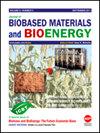Anticancer Effects of Honey Varieties on Human Cells by Studying Some Physical Parameters, Hydrogen Peroxide Content, Catalase, Glucose Oxidase, and Microbial Activities
IF 0.5
4区 医学
引用次数: 3
Abstract
The present work studied the anticancer effects of four honey varieties on human cells by studying some physical parameters, hydrogen peroxide content, catalase, glucose oxidase, and microbial activities. Honey samples were (nigella sativa, moringa, sidr, pumpkin), which were coded as NS, MO, SI, and PU honey, respectively. The tested bacterial isolates Staphylococcus aureus, and Enterococcus faecalis were used for microbial activities. Two types of human cells, breast, and colon adenocarcinoma cell lines were used for anticancer properties. SI Honey samples showed the lowest value for electrical conductivity 3.19 μS cm−1. PU Honey samples recorded the highest value for hydrogen peroxide contents 1582.05 μM, while SI Honey reported a similar trend of 1501.51 μM. The values of catalase enzyme activity ranged from 2.78 U/g in SI Honey to 3.91 U/g in MO Honey. Glucose oxidase activity ranged from 4.12 U/g in NS Honey samples to 10.55 U/g in MO Honey. The highest antibacterial activity was detected by SI Honey with a zone of inhibition value of 14.99 mm against Staphylococcus aureus. PU Honey was the best to inhibit the microbial loud of Enterococcus faecalis 7.93 mm. SI Honey was the most effective against breast adenocarcinoma cells (IC50 66.15 μg/mL), on the same trend MO Honey was the most effective against colon adenocarcinoma cells (IC50 45.13 μg/mL). While NS Honey recorded lower efficiency against both breast and colon adenocarcinoma cancer cells IC50 95.13 μg/mL and IC50 87.66 μg/mL, respectively. The control detected the lowest cytotoxic effects on both breast and colon adenocarcinoma cancer cells IC50 112.33 μg/mL and IC50 203.97 μg/mL, respectively.通过研究蜂蜜的物理参数、过氧化氢含量、过氧化氢酶、葡萄糖氧化酶和微生物活性对人体细胞的抗癌作用
本工作通过研究一些物理参数、过氧化氢含量、过氧化氢酶、葡萄糖氧化酶和微生物活性,研究了四个蜂蜜品种对人体细胞的抗癌作用。蜂蜜样品为(nigella sativa、moringa、sidr、南瓜),分别编码为NS、MO、SI和PU蜂蜜。测试的细菌分离株金黄色葡萄球菌和粪肠球菌用于微生物活性。两种类型的人类细胞,乳腺癌和结肠癌细胞系用于抗癌特性。SI蜂蜜样品的电导率最低,为3.19μS cm−1。PU蜂蜜样品的过氧化氢含量最高,为1582.05μM,而SI蜂蜜的过氧化氢含量也有类似的趋势,为1501.51μM。过氧化氢酶活性在SI蜂蜜中为2.78U/g,在MO蜂蜜中为3.91U/g。葡萄糖氧化酶活性在NS蜂蜜样品中为4.12 U/g,在MO蜂蜜中为10.55 U/g。SI Honey检测到最高的抗菌活性,对金黄色葡萄球菌的抑制区为14.99mm。PU蜜糖对粪肠球菌的抑菌效果最好,为7.93mm。SI蜜糖对乳腺腺癌细胞的抑制效果最好(IC50为66.15μg/mL),MO蜜糖对结肠癌细胞的抑制作用最强(IC50 45.13μg/mL。而NS Honey对乳腺癌和结肠癌癌症细胞的有效性较低,IC50分别为95.13μg/mL和87.66μg/mL。对照组对乳腺癌和结肠癌癌症细胞的细胞毒性作用最低,分别为IC50 112.33μg/mL和IC50 203.97μg/mL。
本文章由计算机程序翻译,如有差异,请以英文原文为准。
求助全文
约1分钟内获得全文
求助全文

 求助内容:
求助内容: 应助结果提醒方式:
应助结果提醒方式:


